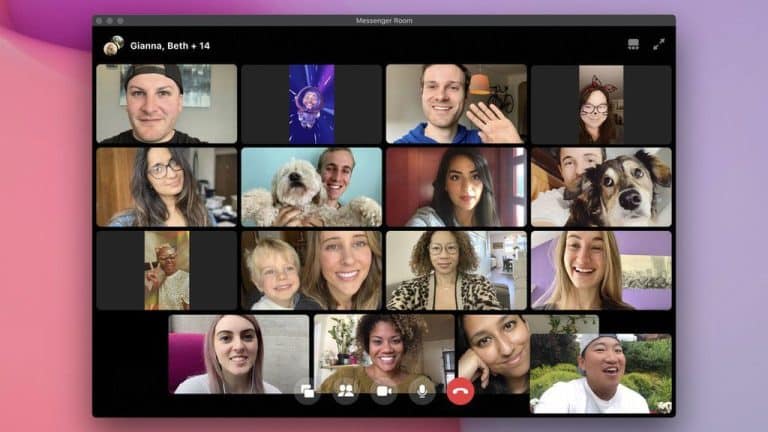Video chat has become an integral part of modern social interactions, revolutionizing the way we connect with others. As the use of video calling technology continues to soar, its impact on traditional face-to-face interactions is becoming increasingly evident.
With the rise of video chat platforms, the dynamics of social engagement are undergoing a significant transformation. The convenience and accessibility of virtual face-to-face communication have reshaped the way individuals interact and maintain relationships. This shift is not merely a temporary response to external circumstances but represents a fundamental change in the way we socialize.
As video calls increasingly supplement or even replace in-person meetings, questions arise about the psychological and emotional implications of this shift in social behavior. The differences in social experience between video calls and personal encounters prompt a closer examination of the changing landscape of human connection in the digital age.
In this post, we will explore the profound impact of video chat on social interactions, delving into the psychological and behavioral aspects influenced by this technological advancement. By examining the implications of video chat on personal relationships, business interactions, and industry dynamics, we aim to shed light on the evolving nature of human engagement in the era of digital connectivity.
The Impact on Social Dynamics of Video Chat
The widespread adoption of video chat technologies has brought about significant changes in how people interact socially. As individuals shift from face-to-face interactions to virtual video conversations, various psychological and emotional implications have surfaced, impacting social dynamics in nuanced ways. Let’s delve into the effects of prolonged video chat usage on mental well-being, social connectivity, and feelings of isolation or connection within communities.
Psychological Effects of Video Chat
Research findings on the psychological impact of prolonged video chat usage have brought to light both positive and negative effects on individuals’ mental well-being and social connectedness. Studies have indicated that while video chats enable visual and auditory cues that mimic in-person interactions, prolonged screen time and the digital nature of these interactions can lead to increased mental fatigue and decreased emotional connection. Furthermore, the inability to maintain direct eye contact due to the positioning of the camera can contribute to feelings of disconnectedness and social anxiety for some individuals.
Social Connectivity and Isolation
The advent of video chat has sparked discussions surrounding its influence on social connectivity and its role in fostering feelings of isolation or enhancing connection within communities. Utilizing video chat platforms has allowed individuals to maintain and even strengthen their social ties despite physical distance. It has provided an avenue for remote socializing, enabling group interactions and facilitating a sense of togetherness in virtual spaces. However, for some, prolonged reliance on video chat as the primary mode of social interaction has led to heightened feelings of isolation and a longing for in-person connections. This dichotomy underscores the complex interplay of video chat in shaping social dynamics.
Adaptation and Behavioral Shifts
In the era of video chat, individuals and societies have undergone remarkable adaptations and behavioral shifts, redefining the norms and etiquettes of social interactions. As technology continues to intertwine with daily life, the evolution of communication patterns and etiquettes in virtual social interactions has sparked both challenges and opportunities.
Changes in Communication Patterns
The prevalence of video chat has revolutionized conversational dynamics, significantly altering the landscape of interpersonal communication. With the reliance on virtual platforms, non-verbal cues such as facial expressions, gestures, and body language play a crucial role in conveying emotions and intent. The shift to online interactions has prompted individuals to adapt to a new set of communication norms, encompassing the interpretation of visual cues and the navigation of virtual conversational spaces. As a result, individuals are refining their abilities to express themselves effectively within the confines of a digital interface, influencing the overall evolution of communication patterns.

Etiquette in Virtual Social Interactions on Video Chat
The realm of virtual social interactions has created a unique platform for the development of evolving etiquettes and norms. From professional video conferences to casual virtual gatherings, individuals are navigating the uncharted waters of virtual etiquette. Addressing challenges such as technical glitches, multitasking distractions, and the need for active virtual engagement has become essential in establishing effective virtual communication. Furthermore, the opportunities presented by video chat have allowed individuals to cultivate a new sense of inclusivity and accessibility in social interactions, transcending geographical barriers and creating a more interconnected global community.

The Future Landscape of Video Chat
The future landscape of video chat technology is poised to undergo remarkable advancements and integration, spearheading transformative changes in social interactions. Let’s explore the potential developments in this realm and their consequential impact.
Technological Advancements and Integration
The trajectory of video chat technology is on the brink of a revolutionary convergence with cutting-edge innovations like augmented reality (AR), artificial intelligence (AI), and virtual environments. This integration holds the promise of immersive experiences where users can seamlessly blend virtual elements with real-world interactions. Imagine a scenario where video chat not only enables face-to-face conversations but also overlays digital information or virtual objects in real time, elevating the depth and experiential richness of communication.
The fusion of AR with video chat presents opportunities for enhanced visual engagement, allowing users to interact with 3D models, spatial annotations, or lifelike avatars within their video chat interface. AI integration further amplifies the potential by enabling features like real-time language translation, personalized content suggestions, and advanced facial recognition, thus augmenting the overall quality and adaptability of video conversations.
Social and Cultural Implications
The advent of advanced video chat technologies has far-reaching implications that extend beyond the realms of mere communication. It serves as a catalyst for profound societal and cultural shifts, fostering global connectivity and redefining traditional social norms. As video chat transcends geographical barriers, it becomes a conduit for fostering multicultural exchanges and cultivating a global community, thereby nurturing a more inclusive and interconnected world.
Moreover, the transformation of social norms is inevitable in the wake of ubiquitous video chat usage. It reshapes the dynamics of interpersonal relationships, influencing etiquettes, and shaping new behavioral norms in digital communication. The ability to engage in face-to-face interactions across vast distances blurs the boundaries of physical proximity, challenging conventional notions of closeness and intimacy. The integration of such advanced technologies into our daily lives holds the potential to reshape the fabric of human interaction, transcending language barriers and cultural divides, and forging a more cohesive global society.
Conclusion
In conclusion, the rise of video chat has radically transformed social interactions, offering both opportunities and challenges for the future of human connection. Video calls have bridged geographical gaps, enabling real-time communication and fostering a sense of closeness, albeit virtually. However, they also pose limitations in replicating the richness of in-person interactions, affecting non-verbal cues and emotional depth. As we navigate this evolving landscape, it’s essential to strike a balance between the convenience of video chat and the irreplaceable authenticity of face-to-face encounters. Embracing these changes while being mindful of their impact will be pivotal in shaping the way we connect and relate in the digital age.



